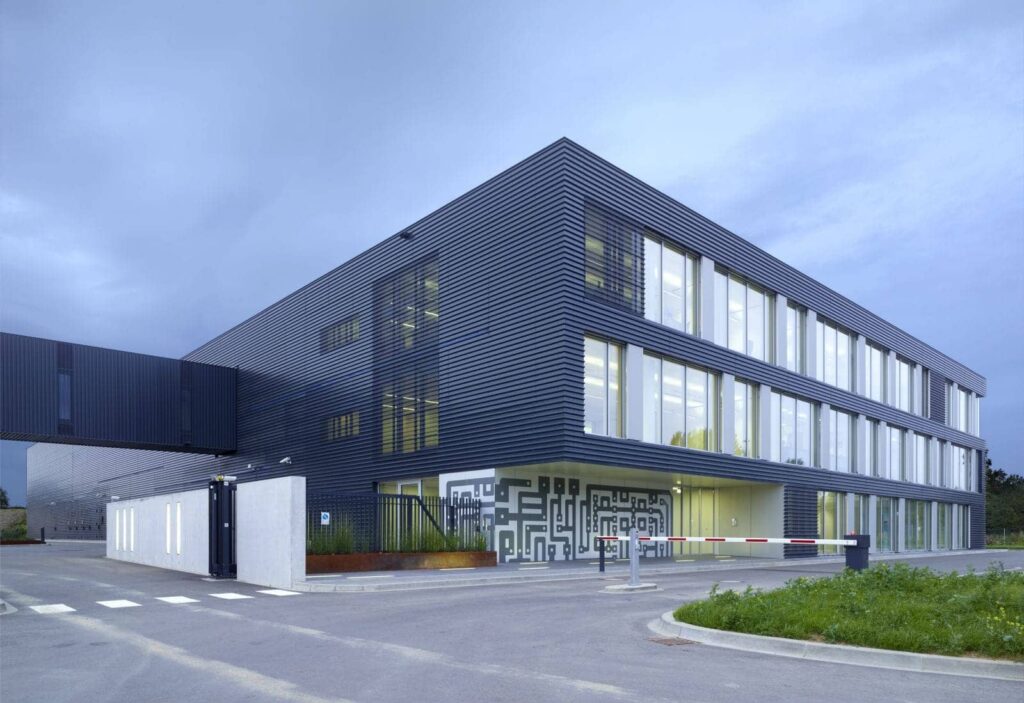
Data Centres: Luxembourg’s hidden digital backbone
Scroll
We rarely see them, yet we rely on them every day. Whether you’re streaming a film, securing online payments, managing healthcare data, or using AI models, your data passes through a data centre. In Luxembourg, these facilities are more than technical utilities. They are strategic assets, powering everything from public services and scientific research to fintech and healthtech. As digital dependency deepens and data volumes explode, the importance of secure, sovereign, and sustainable data centres has never been greater.
Scroll
A foundational layer of the digital economy
Luxembourg is home to a dense and high-performance digital infrastructure that supports its ambition to be a European innovation hub. At the centre of it are Tier IV-certified data centres, operated by state-owned LuxConnect, offering 99.995% uptime per year and a 1,900 km dark fibre network. “Data centres are the backbone of any digitally competitive nation,” says Vincent Weynandt, Chief Technology Officer at LuxConnect. “Strategically located in the heart of Europe, Luxembourg offers an ideal environment for data hosting within the EU, ensuring both regulatory compliance and low-latency access across the continent.”
Sovereignty: A strategic imperative
With growing concerns over data privacy and geopolitics, data sovereignty has become non-negotiable. Hosting critical workloads within Luxembourg-based, state-owned infrastructure ensures full alignment with European legal frameworks and data protection requirements. “We host all our infrastructure within Luxembourg’s borders,” says Weynandt. “This ensures compliance with EU data residency laws and offers a trusted alternative for public and private stakeholders seeking independence from non-European platforms.” This principle is particularly important for services like Clarence, a disconnected sovereign cloud initiative founded by LuxConnect and Proximus Luxembourg, and MeluXina, the national supercomputer operated by LuxProvide.
For Filipe Pais, Chief Customer Solutions Officer at LuxProvide, the location and reliability of the data centre infrastructure hosting MeluXina are mission-critical: “Being hosted within Tier IV data centres like those of LuxConnect ensures that our high-performance computing services meet the strictest requirements for resilience, security, and sovereignty. It’s what enables us to support AI and data innovation across Europe’s strategic sectors.”
More than storage: Fuelling innovation
Today’s data centres do far more than just store data. “AI workloads are reshaping infrastructure needs,” explains Weynandt. “We’re investing in next-generation cooling systems, GPU-centric processing, and network redundancy to meet those demands.”
This is also where supercomputing and datacentre infrastructure converge. MeluXina provides scalable computing power for enterprises and public organisations, while LuxConnect guarantees the robust environment it needs to function. “The synergy between datacentres and HPC infrastructure gives Luxembourg a strategic advantage in Europe’s digital ecosystem,” Pais adds. “We’re not just enabling experiments, we’re supporting mission-critical operations in space, health, industry and finance.”
Greener by design, and by operation
Luxembourg’s data centres are designed to minimise their ecological footprint through renewable energy, circular energy systems, and strict water management. LuxConnect’s infrastructure runs on 100% green energy, largely hydro-powered. It also operates Kiowatt, a biomass cogeneration plant that avoids 27,000 tonnes of CO₂ emissions annually. The company’s water usage effectiveness (WUE) is an industry-leading 0.206 l/kWh, far exceeding even long-term EU targets.
But sustainability doesn’t stop at design. It requires constant measurement, diagnostics, and preventive maintenance. In this context, power quality, cooling performance, and system integrity are increasingly under scrutiny. Issues like thermal leakages, overheating components, or faulty cable joints can significantly increase energy consumption, or worse, cause service interruptions or safety risks. “Studies show that 70% of failures originate within the data centre itself, not from the grid.”, explains Rudy De Winter, Senior Product Specialist at CN Rood. “Without proper monitoring, problems may go unnoticed until they lead to equipment failure or downtime.” Technologies such as thermal imaging, power monitoring, and acoustic detection are now used to spot irregularities in cooling, wiring, and power distribution, often before they escalate.
Sustainability standards and compliance: A growing EU mandate
The EU is raising the bar on sustainable digital infrastructure. Several European regulations are pushing large energy consumers, including data centres, to monitor and report on energy usage and savings. As AI, cloud, and 5G drive power demands even higher, energy monitoring becomes a regulatory obligation as much as an operational priority.
With its sovereign infrastructure and commitment to compliance, Luxembourg is emerging as a model of responsible digital development. The country’s approach, rooted in reliability, transparency, and sustainability, mirrors the direction set by the European Union: one where digital infrastructure supports not only innovation, but also long-term climate goals and data sovereignty.


